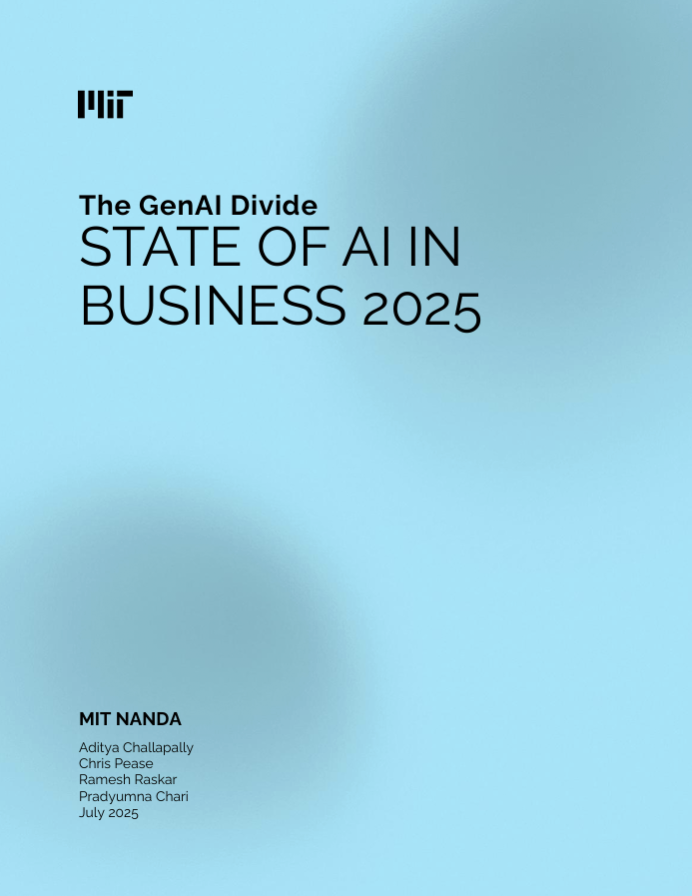The GenAI Divide: State of AI in Business 2025
Despite $30–40 billion in enterprise investment into GenAI, this report uncovers a surprising result in that 95% of organizations are getting zero return. The outcomes are so starkly divided across both buyers (enterprises, mid-market, SMBs) and builders (startups, vendors, consultancies) that we call it the GenAI Divide. Just 5% of integrated AI pilots are extracting millions in value, while the vast majority remain stuck with no measurable P&L impact. This divide does not seem to be driven by model quality or regulation, but seems to be determined by approach.
Tools like ChatGPT and Copilot are widely adopted. Over 80 percent of organizations have explored or piloted them, and nearly 40 percent report deployment. But these tools primarily enhance individual productivity, not P&L performance. Meanwhile, enterprisegrade systems, custom or vendor-sold, are being quietly rejected. Sixty percent of organizations evaluated such tools, but only 20 percent reached pilot stage and just 5 percent reached production. Most fail due to brittle workflows, lack of contextual learning, and misalignment with day-to-day operations.
From MIT interviews, surveys, and analysis of 300 public implementations, four patterns emerged that define the GenAI Divide:
- Limited disruption: Only 2 of 8 major sectors show meaningful structural change
- Enterprise paradox: Big firms lead in pilot volume but lag in scale-up
- Investment bias: Budgets favor visible, top-line functions over high-ROI back office
- Implementation advantage: External partnerships see twice the success rate of internal builds
The core barrier to scaling is not infrastructure, regulation, or talent. It is learning. Most GenAI systems do not retain feedback, adapt to context, or improve over time.
Download this complimentary white paper by completing the secure and confidential registration form below.

